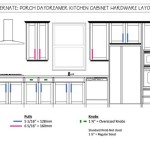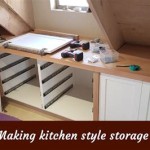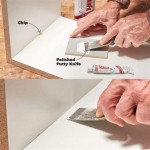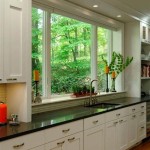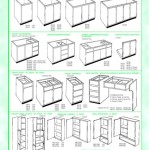What Is The Standard Size For Kitchen Cabinet Knobs?
Selecting the right hardware for kitchen cabinets is a critical step in completing a kitchen renovation or upgrade. Among the various hardware options, knobs play a significant role, not only in functionality but also in the overall aesthetic appeal. Knowing the standard sizes for kitchen cabinet knobs helps homeowners and designers make informed decisions and ensure that the chosen hardware complements the cabinet design and is comfortable to use.
Defining a single, universally accepted "standard" size for kitchen cabinet knobs is challenging due to variations in cabinet styles, personal preferences, and trends in interior design. However, certain sizes are more commonly observed and considered typical. Understanding these typical dimensions, along with factors influencing knob selection and placement guidelines, provides a comprehensive understanding of the hardware selection process.
Typical Dimensions of Kitchen Cabinet Knobs
While a rigid standard does not exist, certain size ranges are frequently encountered in most kitchen cabinetry. These ranges are often determined by the knob’s diameter and projection. Diameter refers to the measurement across the widest point of the knob’s face, while projection is the distance the knob extends outward from the cabinet door or drawer.
Diameter: The most common diameter range for kitchen cabinet knobs falls between 1 inch (25.4 mm) and 1.5 inches (38.1 mm). Knobs smaller than 1 inch often appear too diminutive, particularly on larger cabinet doors or drawers, while knobs larger than 1.5 inches can feel bulky and overwhelming, especially in smaller kitchens. The specific diameter chosen within this range depends on the overall scale of the cabinets and the desired visual impact.
Projection: The projection, or how far the knob sticks out from the cabinet surface, also influences the comfort and usability of the hardware. A typical projection range for kitchen cabinet knobs is between 0.75 inches (19 mm) and 1.25 inches (32 mm). Insufficient projection can make it difficult to grip the knob securely, while excessive projection can create an obstruction and potentially lead to accidental bumps or snags.
It is essential to consider both diameter and projection in conjunction with each other. A knob with a larger diameter may necessitate a slightly reduced projection to maintain a balanced aesthetic and comfortable grip. Conversely, a knob with a smaller diameter might benefit from a slightly larger projection to enhance usability.
Beyond these typical ranges, variations exist to accommodate specific design styles and individual preferences. For instance, contemporary kitchens might feature knobs with sleek, minimalist designs that deviate slightly from these norms. Similarly, traditional kitchens might incorporate knobs with more ornate detailing and slightly larger dimensions.
Factors Influencing Knob Size Selection
Several factors impact the appropriate size choice for kitchen cabinet knobs. These include the size and style of the cabinets, the overall design aesthetic of the kitchen, and the user’s personal preferences and ergonomic considerations.
Cabinet Size and Style: The size of the cabinet doors and drawers is a primary determinant in knob selection. Larger cabinets generally benefit from slightly larger knobs, which provide a more balanced visual appearance and are easier to grip. Smaller cabinets, conversely, often look better with smaller knobs. The style of the cabinets also plays a role. Cabinets with intricate detailing might pair well with knobs that have complementary embellishments, while simpler, more modern cabinets often benefit from sleek, understated knobs.
Kitchen Design Aesthetic: The overall design aesthetic of the kitchen should guide hardware selection. In a contemporary kitchen, for example, streamlined knobs with a minimalist design are typically preferred. These knobs often feature clean lines and a simple, unadorned surface. In a traditional kitchen, ornate knobs with intricate detailing are more appropriate. These knobs might incorporate finishes like antique brass or oil-rubbed bronze to complement the traditional style.
Personal Preferences and Ergonomic Considerations: Ultimately, the choice of knob size should reflect the user’s personal preferences and consider ergonomic factors. Some individuals prefer larger knobs that are easier to grip, while others prefer smaller knobs that are less visually obtrusive. It is also important to consider the user's hand size and dexterity when selecting knob sizes. Individuals with larger hands or limited dexterity may find larger knobs more comfortable and easier to use. It is recommended to physically handle different knob sizes before making a final decision to ensure comfort and usability.
Furthermore, the placement of the knobs should also be considered from an ergonomic perspective. Knobs should be positioned in a location that is easily accessible and requires minimal reaching or bending. This is particularly important for frequently used cabinets and drawers.
Guidelines for Knob Placement
Proper placement of kitchen cabinet knobs is as crucial as selecting the right size. Correct placement ensures both aesthetic harmony and functional ease. Standard guidelines help achieve a balanced and user-friendly design.
Door Placement: For cabinet doors, knobs are traditionally placed on the opposite side of the hinges. This placement provides leverage for opening the door. The vertical position of the knob on the door often varies depending on the style of the cabinet. For standard base cabinets, knobs are typically placed 2 to 3 inches from the top corner of the door. For upper cabinets, they are usually placed 2 to 3 inches from the bottom corner. Adjustments to these measurements are sometimes necessary to accommodate the specific design of the cabinets or to align with existing hardware.
Drawer Placement: For drawers, the placement of knobs depends on the size and style of the drawer. For smaller drawers, knobs are typically centered horizontally on the drawer front. For larger drawers, especially those wider than 24 inches, it may be preferable to use two knobs, spaced equidistant from the center of the drawer. This helps distribute the force required to open the drawer and provides a more balanced appearance. The vertical placement of the knobs on drawers is usually centered, or slightly above center, depending on the drawer’s height.
Consistency and Alignment: Maintaining consistency in knob placement throughout the kitchen is essential for a cohesive and visually appealing design. Knobs should be aligned horizontally and vertically across all cabinets and drawers. This requires careful measurement and precise installation. Using a template or jig can help ensure consistent placement. Professional installers often use laser levels or other advanced tools to achieve perfect alignment.
Consideration of Existing Hardware: If the kitchen already has existing hardware, the placement of new knobs should complement the existing hardware. This might involve matching the placement of existing pulls or aligning the new knobs with existing decorative elements. Seamless integration with existing elements contributes to a unified and polished appearance.
Ultimately, the placement of kitchen cabinet knobs should be both functional and aesthetically pleasing. Attention to detail in both size selection and placement elevates the overall design and enhances the user experience.
In situations where homeowners or designers are uncertain about which knob size to select, it's helpful to purchase a few sample knobs in different sizes and temporarily attach them to the cabinets using adhesive putty. This allows for a visual assessment and practical evaluation of how different sizes look and feel on the cabinets before committing to a final purchase.
Furthermore, considering the finish of the knobs is equally important. The finish should complement the cabinet color and the overall kitchen design. Common finishes include brushed nickel, stainless steel, oil-rubbed bronze, and matte black. The choice of finish can significantly impact the perceived size and style of the knob.
Finally, professional consultation can be invaluable. Experienced kitchen designers or cabinet installers can offer expert advice on knob size selection and placement, ensuring that the chosen hardware enhances both the functionality and aesthetics of the kitchen.

How To Choose The Right Length Pull For Cabinets Porch Daydreamer

Set It And Forget Small Spikes Help Keep Knobs In Place Amerock

How To Choose The Right Length Pull For Cabinets

Park Avenue Cabinet Knob Broe 10 Pack ǀ Kitchen Today S Design House

A Simplified Guide To Understanding Standard Handle Sizes House

Learn How To Place Kitchen Cabinet Knobs And Pulls Cliqstudios

How To Mix Kitchen Cabinet Hardware Knobs And Pulls Porch Daydreamer

How To Choose The Best Kitchen Cabinet Hardware

A Simplified Guide To Understanding Standard Handle Sizes House

Kitchen Cabinet Hardware Ideas The Home Depot
Related Posts

